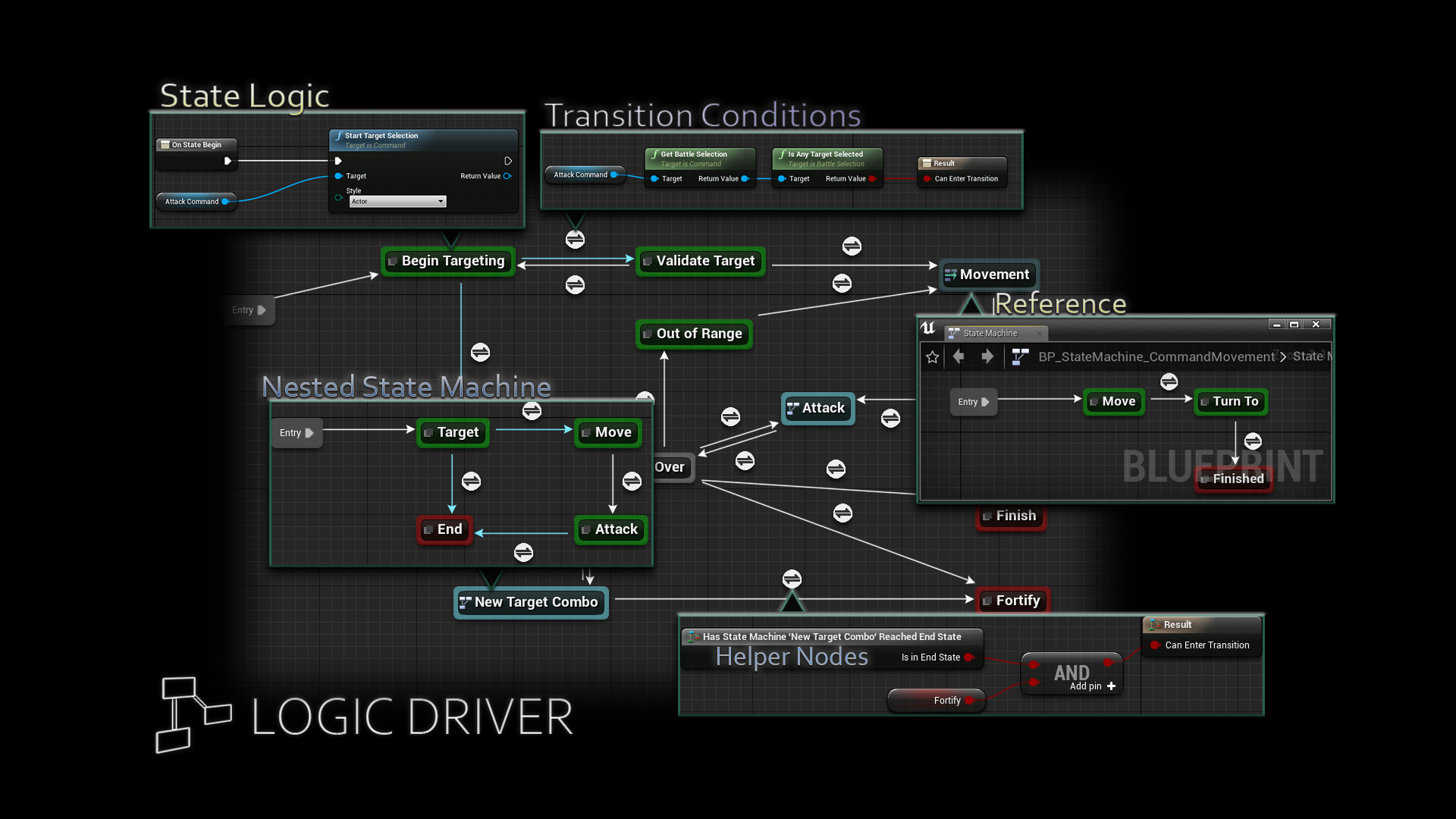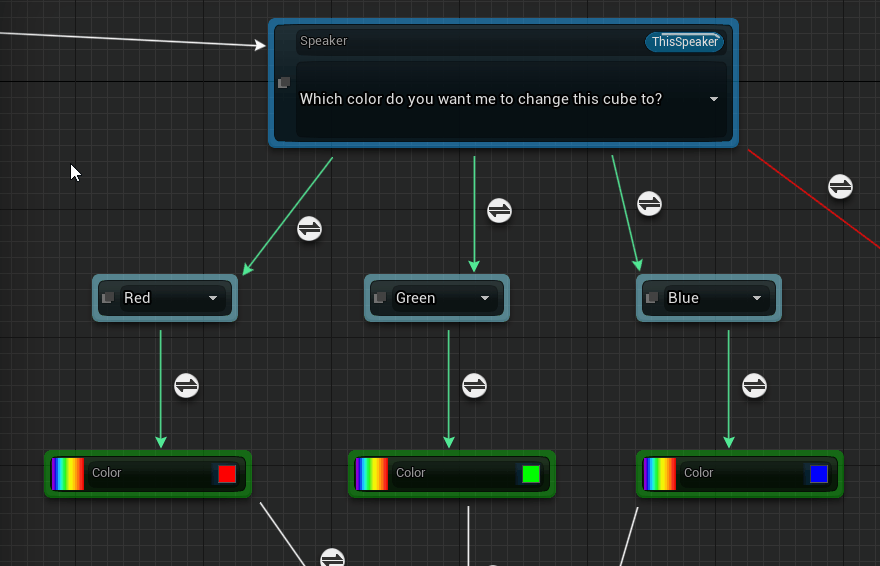Logic Driver Overview¶
At its core Logic Driver is a Finite State Machine which executes based on transition conditions and state logic, easily designed through blueprint graphs in an editor seamlessly integrated into Unreal Engine.
Basic State Machine Features (Logic Driver Lite)
- State logic
- Transition blueprint conditionals and event bound transitions
- Replication
- Nested state machines and state machine references
- Conduits
- Any States
- Save and load states
- Color coding and end state recognition (1)
- Blueprint editor visual debugging support (2)
UObjectandActorComponentsupport (3)
- End states are helpful when you want to naturally exit a state machine, and can be useful when waiting for a nested state machine to finish.
- Visualize which states are active, how long they have been, and which transitions are evaluating. Break point on internal state logic and step through execution, just like in a normal blueprint.
- Control where and how your state machine is instantiated for greater flexibility. Note that replication requires actor components.
Beyond these core state machine features, Logic Driver can be used for much more...
Logic Driver Pro Overview¶
Logic Driver Pro empowers teams to develop sophisticated, designer-friendly node-based gameplay systems with ease throughout their projects.
Developers can create a node class either in blueprints or C++, encapsulate reusable logic, and expose variables on state nodes.
Why are custom node classes with public variables significant?
Exposing variables on the node makes life super simple for designers. You can visualize exactly what you're working with and since this is all done in a blueprint graph, you can easily inject mutable data into the node rather than be limited to the compile time defaults of the details panel.
Displaying variables on the node and creating reusable logic opens up many possibilities:
- Dialogue systems customized to your project with exposed text fields.
- Questing systems with exposed variables for requirements, rewards, or messages.
- Combo systems with exposed montages for selecting the animation to play.
- Any other node-based system that you want, customized for your project.
Developers can then define:
- Editor construction scripts to dynamically modify the node and its properties based on designer input.
- Node validation to give designers visual feedback or prevent a system from compiling.
- Rule behavior to help enforce desired patterns and provide some basic automation.
Then a designer can use this node inside of a Logic Driver state machine blueprint. When placing a state node, every exposed property is visible and given its own blueprint graph. The designer can edit the value directly on the state for most properties or can drag variables to the property.
Designers can also utilize:
- The State Stack to combine multiple states creating a sequence of tasks that execute in order.
- The Transition Stack to quickly generate transition expressions.
Then designers can preview their work in the blueprint editor or debug it during PIE.
With narrative and quest systems being popular use cases, Logic Driver Pro introduces Text Graph properties which allow you to drag & drop variables directly on to text, complete with localization support. Additionally a text search tool is included to find and replace property values.
Use Cases¶
Logic Driver is used throughout the industry, from solo indies creating their passion projects, to large AAA studios developing blockbuster games.
Logic Driver Pro supports a wide range of applications, including combat mechanics, narrative storytelling, AI, and beyond.




